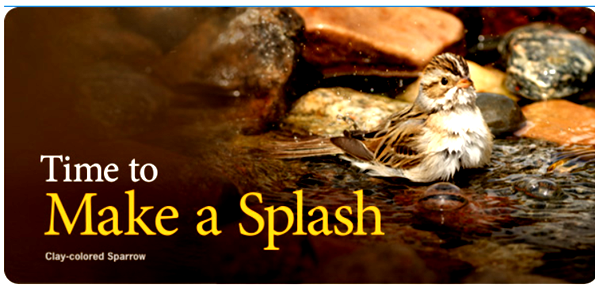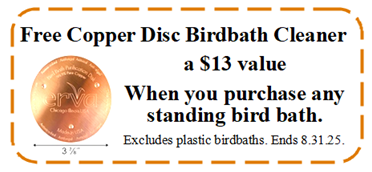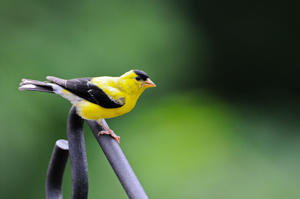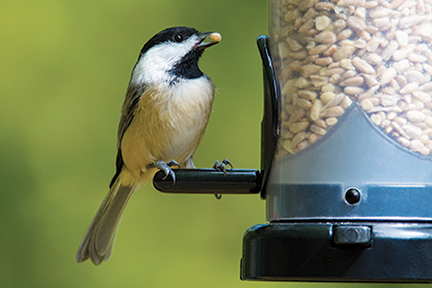
Bird Baths & Fountains
10% OFF*
*Limited to in-stock items only.
All in-stock Bird Baths and Fountains are 10% OFF in August.
Adding one to your yard will definitely make a splash and help Save the Songbirds™.
Since olden times, copper has been used to purify water.
To give your birdbath an extra boost, we are offering the
ERVA™ Copper Purification Disc
to anyone who purchases a new free-standing birdbath in August.

Goldfinches Nest in July & August

Goldfinches are found in most habitats across North America, including backyards. Because they locate food by sight, place goldfinch feeding stations in an open, easy-to-find area. Create a goldfinch feeding station with our exclusive Advanced Pole System® (APS) Basic Setup Hanging Hardware. It’s easy to construct and maintain. Just plant it into the ground, add the extension poles, arms, and baffle, and top it with the decorative finial. Then fill and hang your feeders.
Nyjer (thistle) is goldfinches’ favorite feeder food. Nyjer has a high oil content and is an excellent energy source for these active birds. Our Nyjer seed is delivered FRESH every week. To keep your Nyjer fresh and mold-free in your feeders, use Feeder Fresh in your Nyjer feeders and the absorbent granules will “drink up” excess moisture. Feeder Fresh is completely safe for you and your birds.
Goldfinches are year round residents and nest late in the season, waiting for the thistle to go to seed, so they can use the thistle down to line their nest! Imagine snuggling into a cozy nest lined with the ’down of a thistle.’ Imagine that!
Happy Happy Birding!
Jan and Bob Ross
from all of us at Wild Birds Unlimited
Join us for Double Points Days
August 14, 15 & 16
Join the Daily Savings Club (DSC) any time
to receive 15% off bird food every day
and earn points for Savings Coupons.
August 2025 Specials*
Goldfinch Food Sale
10% off in August*
Includes Nyjer and Finch Blend
During Bird Food Sales, DSC Members receive
20% off bird food products.
Cylinder, Oriole and Hummingbird Feeders 15% Off*
*while supplies last.
Seed Cylinders 15% Off
All Books 10% Off*
*limited to in-stock items only.
Bird Baths & Fountains 10% Off*
*limited to in-stock items only.
Clearance Sale
25% Off In-ground Outdoor Art
Colorful In-Ground Garden Décor
*Includes: all in-ground art, spinners, rain gauges & flower stakes.
In-stock items only. Excludes freestanding birds.
p.s. Some of it’s inside too!
Click on the Newsletter box below for our August Newsletter!
Visit us soon for other in-store special.
*All Specials are In-Store Only and Expire August 31, 2025
Videos: Tips to Certify Your Yard and to Attract Wildlife

